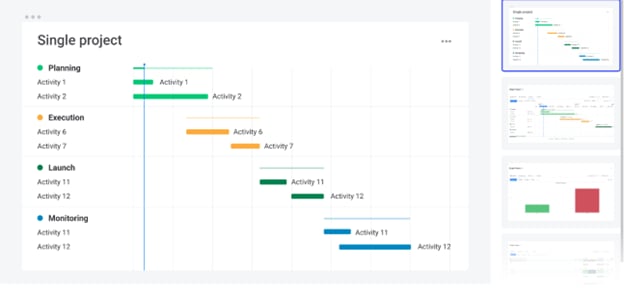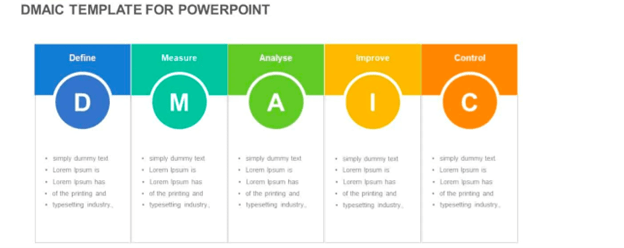One of the keys to successful project management is ensuring teams are on track and meet goals and deadlines. A work package can help tremendously with this.
This article will explain the concept of work packages and how a project team can use them to group related tasks. We will introduce various project management templates and how monday.com’s user-friendly Work OS, specifically its templates, can be a powerful asset.
What is a work package in project management?
A work package is a collection of related tasks that are part of an overall project.
The work package represents a defined deliverable or a specific project phase.
Example: A work package when building a house could be the building plan approvals or the building foundation completions. Each of these deliverables represents project milestones.
The concept of a work package in project management dates back to the early 1960s, when the aerospace industry and the Department of Defense developed subsequent work breakdown structures to refine the model.
Activities within a work package are only those tasks related to achieving that specific work package’s objective or deliverable.
Each work package will represent a distinct type of work or project phase performed by different individuals or groups — the smallest identifiable deliverable.
A work package is the smallest deliverable within a project’s work breakdown structure.
Why is a work package not a separate project?
A project is a set of completed deliverables that achieve a specific objective, while a work package represents one small phase or deliverable of that project.
In the example above of building a home, the project encompasses all work packages from the initial building concept to include building plan approval, completion of the foundations, home construction, and final home completion.
On its own, a work package achieves only one specific deliverable. A work package is a sub-project of the overall project. Splitting projects into separate work packages helps teams focus on their immediate responsibilities and not lose themselves in too much detail.
What is the best way to manage work packages for projects?
There are several best practices to keep in mind when managing work packages for projects.
- Each work package must have a specific outcome and achieve at least one objective.
- Assign a responsible person for each work package and limit its scope to one department, function, or group.
- Keep work packages independent of other packages with the exception of the overall package, which will be dependent on completing preceding packages.
- Pay particular attention to each work package’s scope as it should be neither too large nor too small—this will help to eliminate resource requirements and costs.
- Clearly describe each activity, allocate responsibilities, and estimate resources and time for every work package.
Manage work packages efficiently on monday.com
monday.com Work OS is the ideal place to manage work packages, because you can manage everything from communication and task assignment to performance analysis in one flexible platform.
Here are a few important features you can use to organize your work packages:
- Groups: When setting up a board, create a group for each work package. To differentiate between work packages and activities, name each work package as a deliverable, such as “building plan approval.” Then enter the activities required to complete each work package.
- Timeline Column: This allows you to create a project baseline and setset milestones by clicking on a specific date and choosing the “set as milestones” option in the pop-up window.
- Gantt View: Once all activities have been added, view the work package as a Gantt chart, manage workload, and use a low-level project board to track expenses. You can also set task dependencies. While the high-level board lets PMs see the bigger picture at a glance, the low-level board allows you to you track metrics such as cost management, effort, and scheduling.
Related templates
monday.com templates are an easy way to start, saving time and effort — no need to create boards from scratch. They generally focus on a specific topic of interest and are fully customizable. Here are a few project management templates we recommend starting with.
Project management plan template

The Project Management Plan Template is a high-level planning board that allows teams to start planning any project from scratch. It’s adaptable and fully customizable, making it a good addition to any project.
Single project template

The Single Project Template allows teams to view each work package and project. View this information individually and customize columns to view the information you want to see.. Use monday.com tools to integrate your project with standard in-house tools such as Gmail, Google Drive, Excel, and Outlook.
Free DMAIC template

Define, Measure, Analyze, Improve, and Control (DMAIC) is a data-driven quality management strategy and part of the Six Sigma management improvement process. Our DMAIC Template allows you to get right on with process improvement initiatives.
FAQs about work packages in project management
What is the difference between a work package and Work Breakdown Structure (WBS)?
A work package is the smallest part of a Work Breakdown Structure (WBS) — a single phase or deliverable in a project. A WBS represents an entire project broken down into work packages or deliverables.
How does a planning package differ from a work package?
A project planning package is a component of a WBS that focuses on project planning, specifically the work not yet planned in detail. It’s an overview and does not include a complete list of activities. A work package is a detailed list of tasks aligned to achieve a specific deliverable or project milestones. When completed, a planning package can become a work package.
What is scope baseline?
The scope baseline is an approved and controlled document defining the project scope. Typically, the scope baseline includes:
- Scope statement: A management plan that defines project scope, goals, and deliverables.
- WBS: A breakdown of the project deliverables into work packages.
- WBS Dictionary: A detailed listing of all project activities, tasks, and deliverables.
Using work packages for effective project management with monday.com
Breaking projects into manageable work packages helps project managers better monitor and manage projects. It’s an improvement over traditional Gantt charts that represent an entire project.
Work packages eliminate the clutter of too much detail, allowing project managers to focus on milestones and effectively monitor progress toward each one.
With monday.com, this capability extends to every team member. Each individual manages their activities, identifies risks, and monitors progress toward achieving work package deliverables. Simple automation techniques and visual dashboards help simplify project management processes and provide real-time project information.


